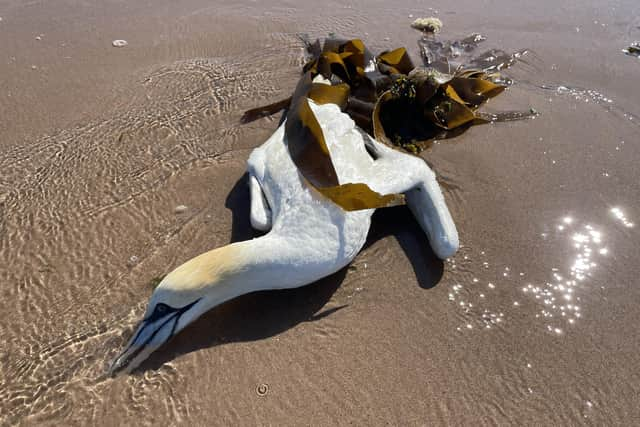Fears for Scotland's seabirds as highly infectious bird flu outbreak continues to take deadly toll
Och well, shame, but circle of life and all that.
But I hadn’t gone much further before stumbling over the slightly older carcass of a young great black-backed gull – thank you for the ID, Peter Stronach.
Then another gannet, and another gull.
It’s no secret that many of our wild birds are struggling for survival in today’s tough times, with a barrage of threats impacting populations, including climate change and human activities such as farming, fishing and increasing urbanisation.
Advertisement
Hide AdAdvertisement
Hide AdNow another danger is causing great concern among scientists – avian influenza.
More particularly, a new highly infectious and deadly strain of the H5N1 virus.


I have no idea if the birds washed up near Dunbar had perished from bird flu, but it’s possible.
Since last October tens of millions of poultry birds across Asia, Africa, North America and Europe have been infected, leading to mass culls and shutdowns of commercial operations.
But what is worrying experts most is how the disease appears to be spreading more easily among wild birds, with an official death toll twice that reported during the last major wave, in 2016/17, although true numbers are likely much higher.
Recent reports from around Scotland attest to the fact the bird flu pandemic is far from over and could have a devastating effect on some of our most vulnerable wild species.


Few places have completely dodged the virus, with everything from swans and ducks to birds of prey, waders and garden favourites among the casualties.
But seabirds in Shetland and other islands in northern Scotland seem to be suffering the biggest losses, with huge numbers of gannets and great skuas discovered dead in the past few weeks.
Advertisement
Hide AdAdvertisement
Hide AdAnd if that news isn’t bad enough, there are fears that people could start contracting the disease.
Although it is possible for people to catch bird flu, infections are uncommon – only two cases have been registered since October, one each in the UK and US.
But scientists are concerned high levels of the virus in circulation and its ability to mutate could increase the chances of it jumping to humans and other species.
Comments
Want to join the conversation? Please or to comment on this article.